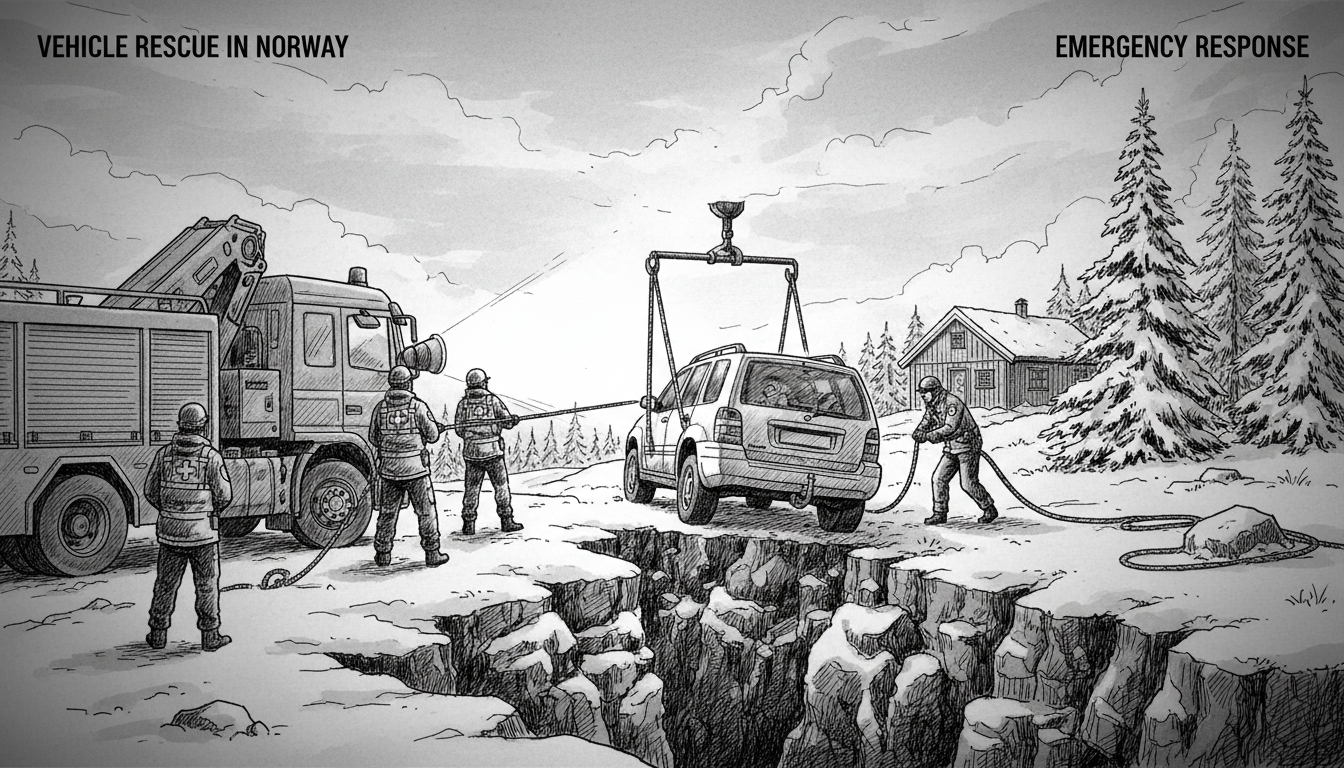Norwegian emergency services conducted a precise vehicle extraction operation after a car left the roadway and became lodged in a drainage ditch. Police received the initial report at 6:31 PM local time, confirming a single-vehicle incident with one occupant. The situation escalated when authorities identified the vehicle as being at risk of rolling four to five meters deeper into the ditch.
Operations supervisor Jan Tore Gregersen confirmed emergency teams worked to stabilize the vehicle while awaiting specialized recovery equipment. "Crews are currently working to secure the vehicle as effectively as possible pending the arrival of recovery services," Gregersen stated during the operation. By 6:52 PM, medical personnel had successfully stabilized the automobile using a winch system.
This incident highlights Norway's sophisticated emergency response infrastructure, particularly in rural areas where challenging terrain demands specialized equipment and training. The country's emergency services maintain particularly strong capabilities for vehicle recovery operations, given Norway's extensive network of mountainous roads and frequent harsh weather conditions. Norwegian rescue teams regularly train for scenarios involving vehicles in precarious positions, especially along the nation's famous fjord-side highways.
International drivers should note that Norwegian emergency services typically respond with comprehensive resources, including technical specialists for complex recovery situations. The country's emergency response coordination centers maintain direct access to specialized equipment providers, ensuring rapid deployment when standard recovery methods prove insufficient. This integrated approach has proven particularly valuable in preventing secondary incidents during extraction operations.
Road safety remains a priority in Norwegian transport policy, with continuous infrastructure improvements targeting accident prevention. Recent years have seen substantial investment in roadside barrier systems and drainage improvements along key transportation corridors. These measures aim to reduce both the frequency and severity of vehicles leaving roadways, though challenging topography continues to present unique response scenarios for emergency teams.
The successful stabilization of this vehicle demonstrates the effectiveness of Norway's emergency coordination systems, particularly the seamless integration between police, medical services, and technical recovery units. Such incidents, while relatively common given Norway's extensive road network, typically conclude without serious injury thanks to this coordinated response approach and the technical expertise of Norwegian emergency personnel.

